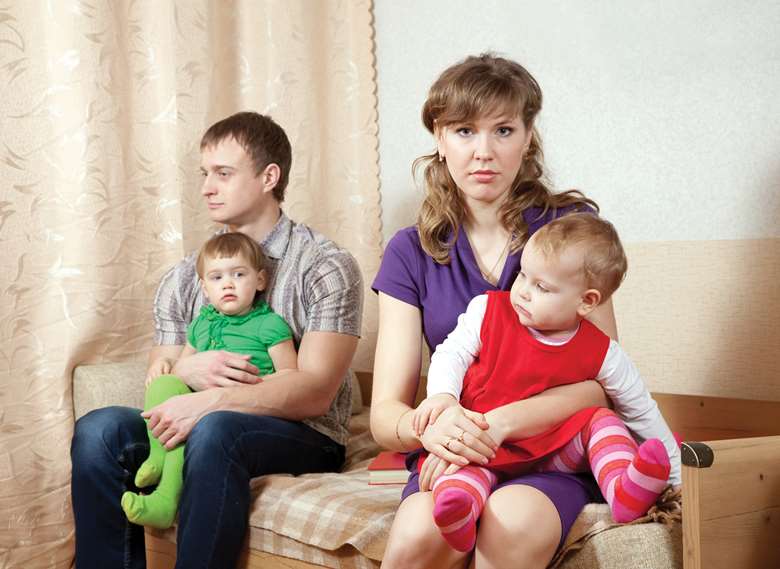Troubled Families: how effective has it been?
Keith Davies
Tuesday, June 9, 2015
A government taskforce is to review the Troubled Families programme, but questions remain over its effectiveness, says a leading academic.

The Troubled Families programme began work in April 2012 with 120,000 families identified across England as experiencing multiple, inter-related challenges. Supported by £448m in public funding it aimed, by April 2015, to turn their lives around, reduce their impact on the public purse and reconfigure services by creating new teams, enhancing inter-professional integration and introducing assertive, whole-family approaches.
In March 2015, the Department of Communities and Local Government (DCLG) claimed that 105,000 families had been "turned around" by the programme and £1.2bn of public money saved. Meanwhile, a second, expanded, phase of the programme has begun, targeting a further 400,000 families.
A flagship policy of the former coalition government, the programme has also been controversial. Critics have questioned the ways in which families are identified and achievements measured, while at the same time voicing concerns regarding the effects of the payment-by-results (PbR) arrangements. Others have expressed doubts regarding the danger of blaming poor families for the effects of unjust social relations and the sustaining of family changes over time.
So with some questioning its effectiveness, has the programme succeeded in achieving its goals?
Programme parameters
Under the initial Troubled Families programme, a family was regarded as troubled where three of following four criteria were met: a family member was involved in youth crime or antisocial behaviour, children were regularly absent from school, an adult was receiving out-of-work benefits and the family represented a high cost to the taxpayer. In the expanded second phase, those eligible also includes families with children in need, those suffering domestic abuse and with members experiencing ill health.
Providers vary with some located in local authority social services departments and others in voluntary sector organisations under contract. Teams are formed around intensive outreach workers (IOWs), but also include members with diverse professional expertise (police, specialists in employment, housing, health, education and recovery from substance misuse).
The approach is a whole-family one recognising the inter-relatedness of different members' problems. It is also assertive, with the IOW engaging families robustly and intensively, supported by the expertise of other team members as required. Intervention often takes a hands-on form in the family home and reflects a contract and time-scale agreed with a Troubled Families co-ordinator and reviewed regularly at "team around the family" meetings.
Reducing costs
Government claims for success are supported, with caveats, by evaluations of similar previous programmes on which the programme is modelled. Recent independent evaluations of phase one programmes have also reported significant change for some families. Perhaps it is to be expected that committed, resourced, multi-professional social work is helpful for families struggling with complex challenges.
Nevertheless, a number of questions have been raised, including how success is measured.
In phase one, local authorities could claim PbR where "at least one adult has moved off out-of-work benefits into continuous employment in the last six months". Although this outcome is positive, it may not reflect the whole-family transformation implied by the term "turned around". The less politicised, but more realistic, term "helped" might be more accurate. In addition, government figures derive from providers seeking PbR and inevitably questions arise regarding how far financial incentives drive practice and data.
Contact through the initiative varies in length according to provider and contract, but is generally between six months and two years. Following a brief intervention, a concern arises regarding how change is sustained. Although success achieved in small, defined areas might lead to sustained improvements as a result of increased self-esteem and self-efficacy, there remains a need for research into the durability of family change.
Reshaping services
Criticising traditional work with families with multiple needs as disjointed, ineffective and expensive, the DCLG has sought through Troubled Families to better integrate services, reduce overall costs and reshape practice in a hands-on way. Reviewing these goals, the integration of services has been successful in that inter-professional programme teams have been established across the country. However, improving the participation of the health sector is a particular focus of phase two of the initiative.
Integration with local authority children's and adult's services is potentially challenging. Families may easily compare the seemingly distant and sceptical social worker unfavourably with the familiar, supportive and resource-providing troubled families teams. There is also the danger that high-profile teams are prioritised for resources. This is potentially encouraged by the distancing by the DCLG of the Troubled Families programme from social work.
Turning to practice methods and values, some key issues seem neglected in the discourse around the programme. First, what sort of family is envisaged? The variety of family configurations highlights the dangers for practitioners of imposing a fixed stereotype of family membership, roles and routines and the wisdom of listening to families themselves regarding who they are and how they work. In the same vein, how should intrusive, proactive work in the home respond to cultural, faith-based and gendered family norms?
Second, intensive, relationship-based work with vulnerable families raises questions of boundaries, although these are neglected in framework documents. Third, assertive practices with families facing sanctions for non-engagement clearly risk both false compliance and abuse of power.
There is, then, evidence for the short-term effectiveness of the Troubled Families programme although more thought is needed over the long-term change, key ethical and practice issues and its relationship to mainstream services.
- Keith Davies is associate professor, the school of social work, Kingston University and also edits Social Work with Troubled Families, a critical introduction




